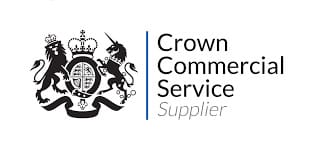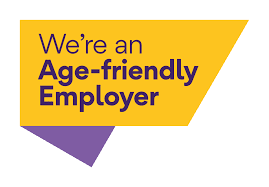IR35 – What does your organisation need to know
Despite being first introduced in 2000, IR35 (also known as the off-payroll working rules) has rarely been at the forefront of businesses and charities minds. However, with not long to go until the roll out of the rules to the private sector, it is now a crucial area for organisations to focus on. Read on to understand the key aspects of the legislation, our top tips for compliance and how Bates Wells can help your organisation.
What is IR35?
IR35 is a set of rules targeting the tax treatment of individual contractors who provide their services through an intermediary (most commonly a personal service company – “PSC”).[1] PSCs are often owned and controlled by an individual contractor and an organisation (“the End Client”) will then contract with that PSC to obtain the services of that individual. Sometimes, other entities are involved in the supply chain between PSC and End Client, i.e. agencies. Utilising individual contractors in this way is beneficial for End Clients as they avoid employee National Insurance Contributions, PAYE and the obligation to provide various employment rights. Offering services via a PSC is also beneficial for the individual as they can receive payment in a tax efficient manner by drawing down dividends and offsetting expenses against taxable profits. It was amid the growing concerns that these arrangements were being used for tax avoidance that IR35 was introduced.
In a nutshell, the rules apply in situations where there would have been an employment relationship between the End Client and the individual contractor if the contractor had engaged directly with the End Client rather than through the PSC. Therefore, if there is a genuine self-employment relationship, IR35 will not apply. However, if the contractor would have been classed as an employee, IR35 ensures that broadly the same tax liabilities apply.
For the first 16 years of IR35’s existence, the duty of compliance fell solely onto the shoulders of the PSCs (or other intermediaries). Therefore, PSCs were responsible for determining whether an individual fell within IR35 (e.g. should they be classed an employee) and if so, paying the appropriate employment taxes. In 2017, the rules were amended for the public sector and the burden of determining an individual’s employment status passed to the End Client. The liability for paying the appropriate employment taxes was also moved from the PSC to the Fee Payer which is the entity which pays the PSC (this is sometimes the End Client but can also be an agency). For the private sector, the rules have remained the same with compliance remaining at the feet of the PSC. However, all that is set to change.
What is changing?
In April 2020, the rules are being amended for the private sector and the burden of determining employment status is being moved from the PSC to the End Client. The tax liabilities are also being shifted from the PSC to the Fee Payer. Therefore from 6 April onwards, it is no longer safe for organisations to assume that because they have engaged a contractor via a PSC, there will be no need to pay the traditional employment taxes in relation to that individual.
Will my organisation be affected?
If your organisation engages with contractors and off-payroll workers you could be impacted by the IR35 changes as it is likely that you will be engaging some individuals via PSCs.
However if your organisation is classed as a small business, IR35 does not apply and PSCs continue to be responsible for compliance with the regime. A small business is defined in the Companies Act as an organisation which meets two of the following three criteria:
- An annual turnover not exceeding £10.2 million
- A balance sheet total not exceeding £5.1 million
- An average over a year of not more than 50 employees[2]
For charities it is important to note that the definition of ‘turnover’ is intended to have the same meaning as defined in Section 474 of the Companies Act (turnover is the amount derived from the provision of goods or services within the company’s ordinary activities after deduction of trade discounts, VAT and other relevant taxes). Therefore, charities which receive donations and other voluntary income which does not derive from the provision of goods and services, should not count this towards their turnover.
How do we know whether there would have been an employment relationship?
Unfortunately, you can’t just rely on what the contract says. To get to the crux of this question, organisations will need to consider the reality of all aspects of an individual contractor’s working arrangements. To assist with this, HMRC has developed an online tool to help End Clients check the employment tax status of their contractors (Check Employment Status for Tax (CEST)). However, as determining an individual’s employment status is a complex exercise involving the examination of key employment case law,[3] we would recommend seeking legal advice and carrying out further analysis, particularly in borderline cases.
However, the following questions may be useful in making some initial determinations as to whether an individual is likely to be caught by IR35:
- Does the End Client exercise a high level control over the individual?
- Is there a right of substitution or does the service have to be provided by the individual contractor?
- Is there a mutuality of obligation? Is the End Client required to provide work and is the individual contractor required to perform it?
- Is the individual contractor ‘in business on their own account’? i.e. can they make a profit or incur a loss?
- Does the individual contractor provide their own equipment and insurance?
- Is the individual contractor integrated into the workplace? E.g. do they share the same perks as other employees?
- Does the individual contractor work for other End Clients?
- Are the terms of the contract consistent with an employment relationship?
What if we decide there is an employment relationship?
If you reach this conclusion, the first thing to do is document your reasoning and the factors that led to that determination. This is because IR35 requires End Clients to provide individual contractors (and if relevant the agency or any other entity involved in the supply chain) with a Status Determination Statement (“SDS”) which is essentially a document clarifying whether or not the End Client believes the individual should be treated as an employee for tax purposes and the reasons for reaching that conclusion.
Once the SDS has been provided to all relevant parties, it is a bit of a waiting game as all organisations must have in place a process to enable the individual contractor (or if relevant, the agency) to challenge the status determination. If a challenge is made, the End Client must respond within 45 days, either confirming the original determination or replacing it with a new one.[4] Regardless of the outcome, the End Client must provide reasons for their conclusion.
It is worth noting that if you conclude that there is an employment relationship for tax purposes, it does not necessarily mean that there is an employment relationship for employment law purposes ( although it is often indicative).
How should my organisation prepare for the changes?
Dealing with the roll out of IR35 to the private sector is no small task and there are several preparatory steps you can take now to ensure that your organisation is ready for 6 April 2020.
- Train – Provide training to the parts of your organisation that engage contractors to ensure they are familiar with the new requirements.
- Audit – Identify how many PSCs (or other intermediaries) your organisation engages with and which ones may be employees for the purposes of IR35.
- Engage – Communicate with your contractors, explain that changes are introduced and there will need to be an exchange of information and a review of working practices.
- Analyse – Establish a process for receiving the information you require from your contractors, e.g. a working practices questionnaire. This will need to be issued to, and completed, by your contractors.
- Dispute Resolution – Prepare and publish a ‘status disagreement process’.
- Develop – Develop a system for recording and keeping status determinations under review.
- Adapt – Review your current systems (e.g. payroll, contracts) to ensure that they are fit for purpose under the new regime.
Do you have any top tips?
Last but by no means least, here are our top tips on how to stay compliant with the IR35 rules.
- Take care when determining an individual’s status. If your organisation makes a mistake, it is less likely that HMRC will take an aggressive stance if it can be shown that reasonable care was taken in making and issuing the SDS.[5]
- Know the limits of the tools you are using. HMRC has acknowledged that the CEST Tool does not always provide the correct answer, therefore, the risks need to be weighed up as to whether a more thorough examination is required by the circumstances.
- Avoid blanket determinations. Not only will it be difficult to demonstrate that there was reasonable care in making the determination, it can be particularly damaging to morale and can hinder recruitment efforts.
- Don’t leave it too late. HMRC has provided plenty of notice through outlining the proposed changes throughout the consultation process. Therefore we can expect them to hit the ground running when it comes to compliance.
How can Bates Wells help?
Here at Bates Wells we have a strong team of experienced IR35 experts who are already helping organisations understand and prepare for the changes ahead of April 2020. We are happy to assist with all stages of the compliance process including:
- internal policies;
- designing a working practices questionnaire;
- performing status reviews;
- documenting decisions; and
- monitoring status determinations.
We also offer an in-depth webinar (‘An essential guide to IR35’) and supporting materials such as an employment status checklist and a template SDS.
If you have any questions, or require any assistance, please don’t hesitate to contact Paul Jennings at p.jennings@bateswells.co.uk
[1] The rules are contained within the Income Tax (Earnings and Pensions) Act 2003 and the Social Security Contributions (Intermediaries) Regulations 2000 (SI 2000/727)
[2] Defined in s382 Companies Act 2006
[3] Ready Mix Concrete, Hall v Lorimer and Market Investigations are the key authorities on employment status in the UK
[4] Failure to respond within 45 days mean the tax liability will become the End Client’s responsibility even if they are not the Fee Payer.
arbitrary[5] A failure to take reasonable care can also mean that the tax liability becomes the End Client’s responsibility even if they are not the Fee Payer

Contact us
Call us on 07930 356305 or email HQ@russam.co.uk








